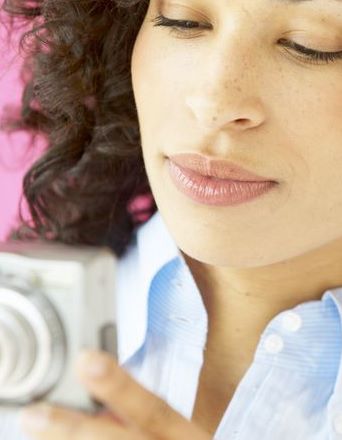
It is a well-known fact that kids love to take pictures. Today’s digital cameras have come a long way from the old days of film photography. In the past, parents could spend a small fortune developing rolls of film that are all pictures of their family pet. Now, the digital camera allows parents to have their child take numerous pictures of whatever they like and they don’t have to pay money to develop them.
If you are buying a digital camera for your child for the first time, stick to the basics. It is easier to buy a basic digital camera for the first time and allow your child to develop more advanced features on their own over time.
When you give your child their first digital camera, you should give a simple explanation about the camera. If you have purchased a digital camera for your child, show them all the basic features in the beginning. The zoom feature can come after they have learned how to focus an image and how to get the image in the picture. Show your child about each part of the camera and what it does. For example, you should show them the lens, LCD screen, viewfinder and flash. If you are using a film camera, show them where the film is loaded and how to read the number of pictures remaining. It is easier to use something once you understand how it works. You can introduce the whole camera in a day, or take your time, spanning it out over the week.
Go over the camera’s features with your child.
After you have explained how the digital camera works, you need to teach your child the fundamental elements of using the camera. Discuss basic photography skills with them such as: angle, pan, distance, level, focus, and framing. Of course to a child, the word “focus” could mean many things, so try using words that relate to your child on their level. Instead of focus try using the world clear or sharp. Explain to your child that before they push the shutter button, they should look through the viewfinder or LCD screen to make sure the image is in focus, is in the picture, and nothing is obstructing the view.
Many people assume that digital cameras will do all the work and all they have to do is point and shoot. Teach your child that a good photographer takes the time to get to know their camera and their subjects. You can make great photos with a point and shoot, but it will be even better if you are able to take the time to make it a beautiful picture. Teach your child how to make minor adjustments to their photographs so the next time they take pictures, the photo will look better.
Help your child with their subject. Quite often children will take pictures of things they see around them all the time. This is why the family pets tends to be the popular subject in many kids photographs. If your child wants to take pictures of the family pet, teach them a couple skills that will improve their pictures. Have your child get down to the level of the animal. Far too often pictures of animals are taken from above them, so their head needs to be looking up at you and this often doesn’t happen. By having your child get on their stomach, they can truly get down to the level of the pet. Teach your child about proper lighting conditions. A flash can scare an animal and make them apprehensive about getting their picture taken in the future.
After you have introduced the digital camera and your child has begun taking pictures, you should help them improve for the future. Upload all the pictures your child has taken to your computer and together you can sit down and discuss the good elements of their photographs and what needs to improve for the future.
I was looking for a camera for my 6 year old daughter because when she used my camera in the past she took some wonderful photos and at ~4ft tall she has a very different perspective of the world. I look at all of the children’s cameras in the sub $100 range and was anything but excited. Not only is the quality on these cameras abysmal but the reviews on various sites indicated that they were not very robust. I did not want to give her a camera that she’d break in a week and I was hoping to give her something that could take worth while pictures.
What I ended up purchasing was an Olympus Stylus SW series camera. For those not familiar, the SW line, soon to be renamed Tough, are shock, freeze and waterproof Point-and-shoot cameras that are intended for adults. The camera was pricey (e.g. ~$220) but I have found it to be very well suited for a child. They come in flash colors like orange, red, lime green and blue. They have automatic modes that manage everything for you but also have manual modes to allow the child to explorer the camera. What particularly impressed me about the camera was a manual mode that gave simple explanations of each feature and a visual example if applicable (e.g. The Sepia option showed side-by-side live views of what the camera was seeing normally and with sepia enabled), it is like having the manual built into the camera.
I couldn’t be more pleased with my purchase. The camera takes very nice photos, as she grows she’ll be able to explore it’s features so it’ll grow with her, it’s waterproof so we can take it to the pool, I don’t have to supervise her use since there’s little chance she’ll break it, and it makes her feel special because she’s been given a real camera and not some cheap plastic crap.